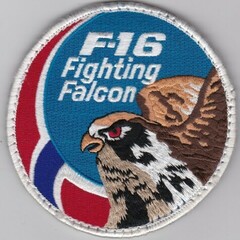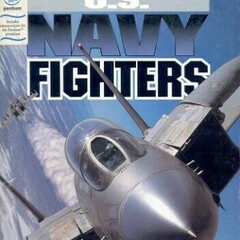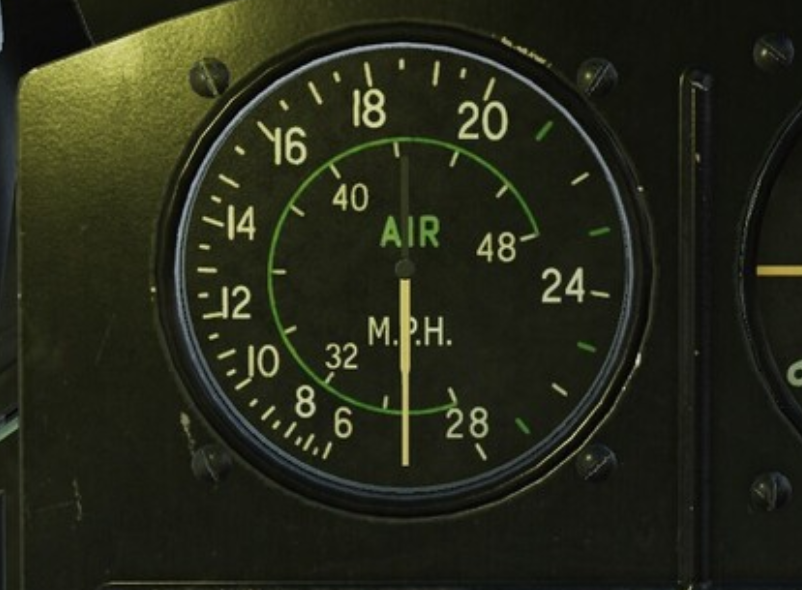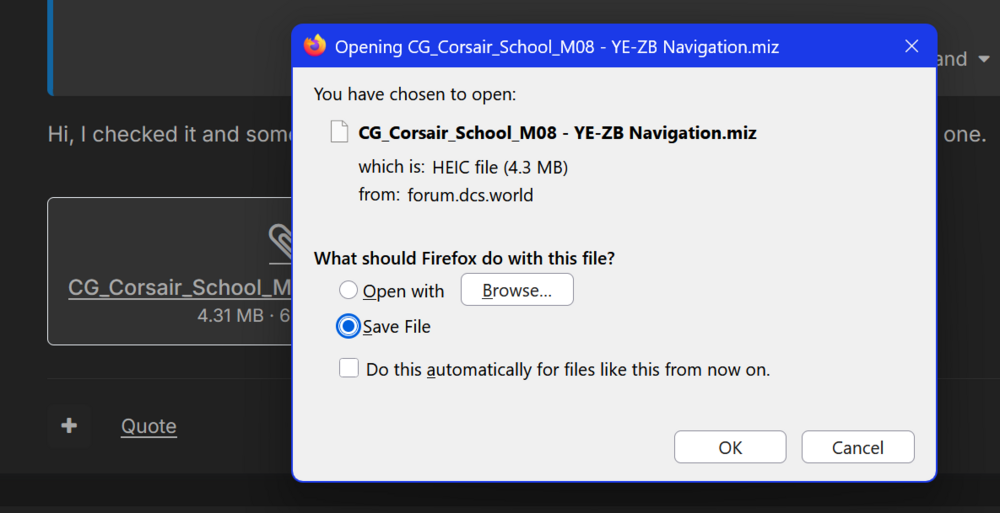-
Posts
475 -
Joined
-
Last visited
-
Yes. You have a good point. However it seems obvious that if we want a fix to the touchdown dynamics we will have to do it ourselves. Maybe we will get lucky fiddling with the values in this area.
-
- Thanks. I'll try modifying a few values around here, but I am not hopeful as there is this comment on the block which seems to indicate that is is just another function they have not bothered to complete in 4 years of early access. - until pneumatics compression not implemented
-
Tried various different damper values up to +/- 10x original without any noticeable change to the touchdown bounce. mainGearDirectDamperForceFactor = 50.0 mainGearBackDamperForceFactor = 75000.0
-
Terry Dactil started following Mav87th
-
Well there goes the rest of my weekend. I'll be trying some mods to those values. Thanks Mav87th - some good info there. For anyone else interested in joining us to in improve the Mosquito's 2 wheel landing characteristics, the file is ... <??>:\DCS World\Mods\aircraft\MosquitoFBMkVI\FM\FMOptions.lua
-
Yes, I agree with you that the Mosquito does not behave realistically for a two wheel landing. I was fortunate in the early days of my aviation career to fly many different types of tail draggers from the Tiger Moth to the DC-3 and the Bristol Freighter. Like you, I know that pitch up on a two wheel touchdown is proportional to the sink rate. In fact if you have a really low vertical velocity on touchdown you can actually get a nose down pitch moment due to the drag from the wheels spinning up. I reported this unrealistic behavior about 4 years ago when the Mosquito was released, , but nothing has been done to fix it. Unfortunately I don't think it ever will be. The Mosquito is still labelled "Early Access" but probably could be more accurately labelled "Abandoned". I spent some time with the configuration files looking at the possibility reducing the moment arm between the CG and the main wheels but a successful modification proved beyond my capabilities. Perhaps someone more qualified reading this will take up the challenge.
-
Terry Dactil started following Special Options Slider to Adjust Trim Rate and Abandoned?
-
Once again there is nothing for the Mosquito in the latest updates.
-

Airspeed Indicator - Needle Tail and Face
Terry Dactil replied to VampireNZ's topic in Bugs and Problems
What name did you change it to? I would prefer to keep all my mods in 'Saved Games' and avoid any changes to the main program. -

Maneuvering On The Ground With Differential Braking
Terry Dactil replied to AG-51_Razor's topic in Bugs and Problems
Same here. I give up ... My Corsair will stay in the hangar until fixed. It has too many problems to be considered airworthy just yet. It will be great when fixed though. -

Airspeed Indicator - Needle Tail and Face
Terry Dactil replied to VampireNZ's topic in Bugs and Problems
Yeah - no luck with it in Saved Games but it works for me when I put it into the DCS directory. <DCS>......\Mods\aircraft\MosquitoFBMkVI\Liveries\Cockpit_MosquitoFBMkVI\default\ -
Yay! In another 2 weeks we can celebrate that the Mosquito has been 4 years in Early Access since its release. Happy Anniversary !!
- 77 replies
-
- 13
-

-

-
There is also an error with the back end of the needle being painted white. It should look like this ... Get the mod on this thread
-
Yeah... and while they are at it, how about also doing something about the visibility of the radio channel selections. Can you tell me what radio channel is selected here? I certainly can't. I think there must have been a competition in WW2 to design the ergonomically worst cockpit layout possible. The British obviously won with the Mosquito by placing the fuel tank selectors behind the pilot's seat, but I reckon the Corsair is a close second. (The Germans would have been dead last with the FW190-D9)
- 1 reply
-
- 2
-

-
-
You can alter the trim sensitivity by changing its value in the default.lua file located ... >> DCS World\Mods\aircraft\F4U-1D\Input\joystick\default.lua Here are the original values. --/N/ Trimmers {pressed = device_commands.iCommandElevatorTrim, cockpit_device_id = devices.CONTROL, value_pressed = 0.002, name = _('Trim, nose down'), category = _('Flight Control')}, {pressed = device_commands.iCommandElevatorTrim, cockpit_device_id = devices.CONTROL, value_pressed = -0.002, name = _('Trim, nose up'), category = _('Flight Control')}, {pressed = device_commands.iCommandEleronsTrim, cockpit_device_id = devices.CONTROL, value_pressed = -0.002, name = _('Trim, left bank'), category = _('Flight Control')}, {pressed = device_commands.iCommandEleronsTrim, cockpit_device_id = devices.CONTROL, value_pressed = 0.002, name = _('Trim, right bank'), category = _('Flight Control')}, {pressed = device_commands.iCommandRudderTrim, cockpit_device_id = devices.CONTROL, value_pressed = -0.002, name = _('Trim, yaw left'), category = _('Flight Control')}, {pressed = device_commands.iCommandRudderTrim, cockpit_device_id = devices.CONTROL, value_pressed = 0.002, name = _('Trim, yaw right'), category = _('Flight Control')}, {pressed = device_commands.Trim_reset_kb, cockpit_device_id = devices.CONTROL, value_pressed = 0.0, name = _('Trim, reset all'), category = _('Flight Control')}, This method has been reported to be successful in another thread.









